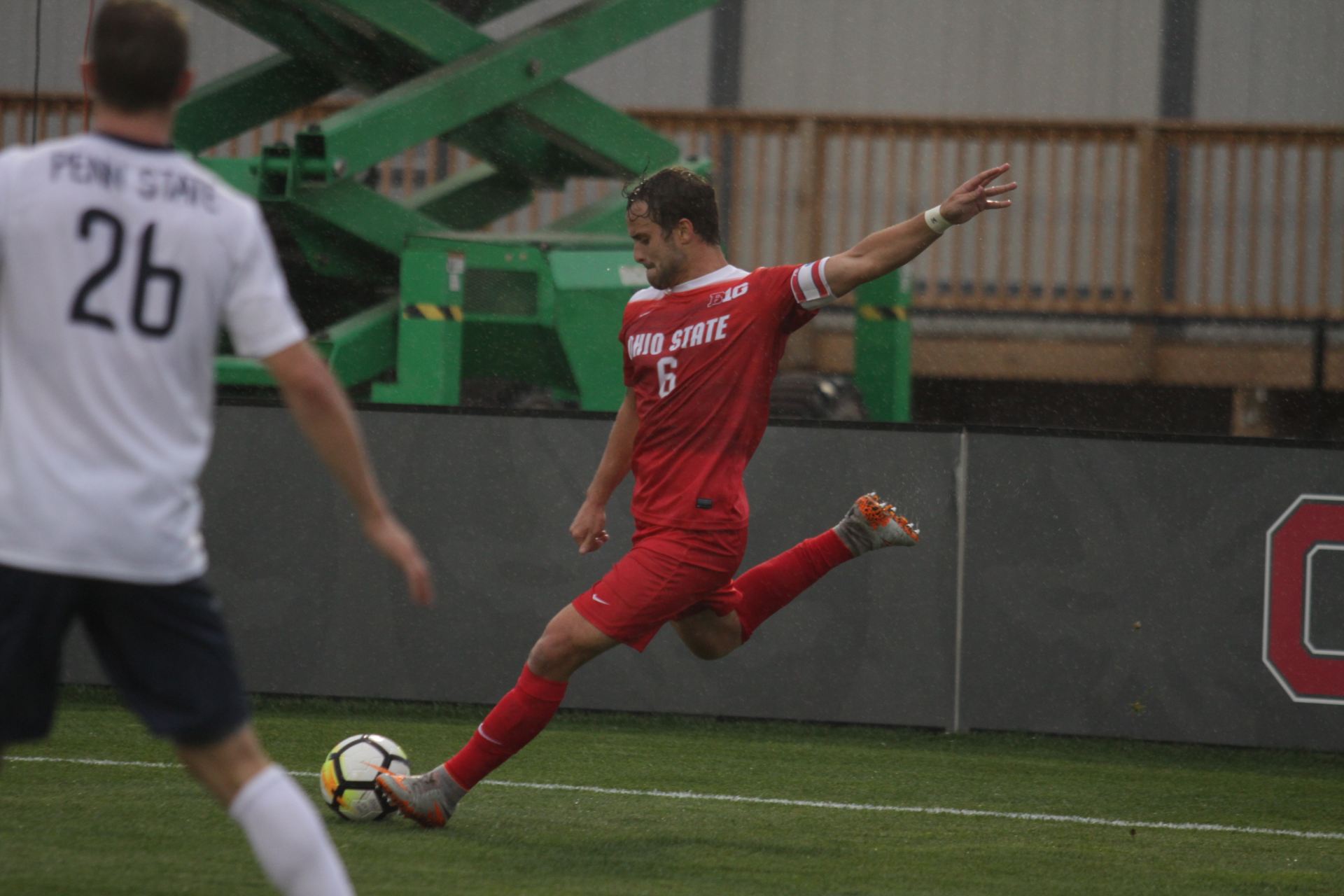
A shot from documentary “Anatomy of a Faun.” Co-director Daisy Wright is set to speak about the film April 2 at University Hall.
Credit: Courtesy of Gregg Mozgala
Sometimes progress can be found in the most unexpected places.
“Anatomy of a Faun” is a documentary film based on the production of a live work, “Diagnosis of a Faun.” The film details the true story of the surprising physical progress that an actor who has cerebral palsy makes with the help of choreographer Tamar Rogoff.
Cerebral palsy is a term describing a set of permanent disorders causing physical disability.
Daisy Wright, co-director and editor of “Anatomy of a Faun,” is scheduled to speak to Ohio State students about the creation of the documentary.
She explained in an interview how this documentary is different from others, as it was unscripted and she sifted through many kinds of media to extract the narrative behind the production.
“In this particular film, we had so many kinds of material to work with. We had early camcorder footage, we had audio diaries, and we had professionally shot footage,” Wright said. “I guess my biggest contribution was taking all of those various elements and finding out how they could all work together. It’s not necessarily a traditional documentary in a lot of ways because it has so many different kinds of material.”
Gregg Mozgala, an actor from New York who serves as a subject for the documentary, has dealt with cerebral palsy for his entire life. In spite of being active and undergoing years of physical therapy, his prognosis was still grim. Doctors told him he would be wheelchair-bound by age 40. However, by undergoing specific dance training for a stage production, Mozgala was able to make dramatic improvements in his mobility in a short time.
Rogoff, also a co-director of “Anatomy of a Faun,” met Mozgala after seeing him in a stage production. In spite of his disability, Rogoff believed he was perfect for “Diagnosis of a Faun,” a live performance she was planning at the time, which premiered in 2009 at the La MaMa Experimental Theatre in New York.
“I asked Gregg to work with me because I saw his performance in ‘Romeo and Juliet.’ I saw a certain energy in Gregg,” Rogoff said.
They began to work and train together, and as Mozgala began to make relatively quick progress with the movement of his body, Rogoff realized something special was happening.
“I picked up the camera at that point myself, when he started to make these changes in his body that we knew were unknown with cerebral palsy. His heels came down — he had been a ‘toe-walker,’ something that is a part of cerebral palsy. Then I did the producing, the making of the film, and I invited other people to come as well. I kind of began as the producer, but I’m also the subject and writer and co-director,” Rogoff explained.
It wasn’t too long after that the pair caught the attention of doctors and specialists.
“We were invited to Harvard, and the (New York University) neurologist Oliver Sacks came to see us. We were even featured in an article by the New York Times. It’s mind-boggling what happened. There’s a huge difference in his walk and his whole nervous system. People were asking to study us because they couldn’t figure out how it was done.
“After the press broke, we were approached by hundreds of people about what we were doing, because we had stumbled upon something that people thought was heretofore impossible. To see someone with cerebral palsy go through these dramatic changes, that’s a big deal,” Mozgala said.
Wright said she hopes viewers gain something from the film.
“I hope that the film would convey that you don’t necessarily need to accept the status quo and pre-existing medical diagnosis or pre-existing ideas about what’s possible. Gregg was supposed to be in a wheelchair by his 40s, and he’s really changed his prognosis through his work with Tamar,” Wright said. “Even if you don’t have a disability or you’re not interested in dance, there should be something in the film that speaks to everyone in terms of how we label ourselves, what we think is possible for ourselves and how we can find ways to defy people’s expectations of us.”
Wright is slated to speak to students about the documentary at 9:35 a.m. Wednesday at 0056 University Hall. An early screening of the film is set to be held Tuesday at 4:30 p.m. in the U.S. Bank Theater in the Ohio Union.


